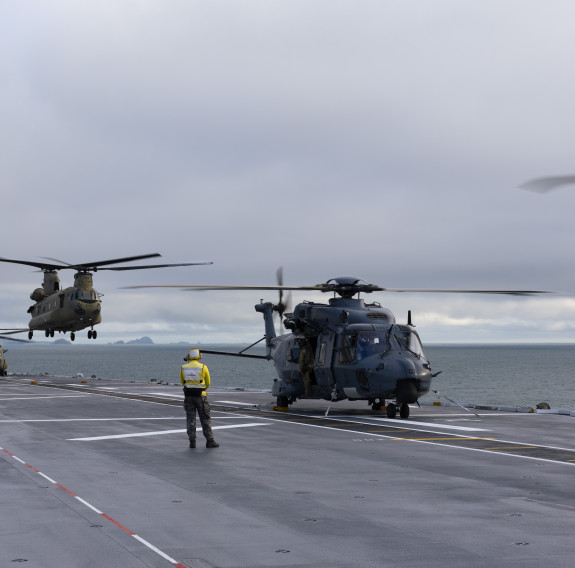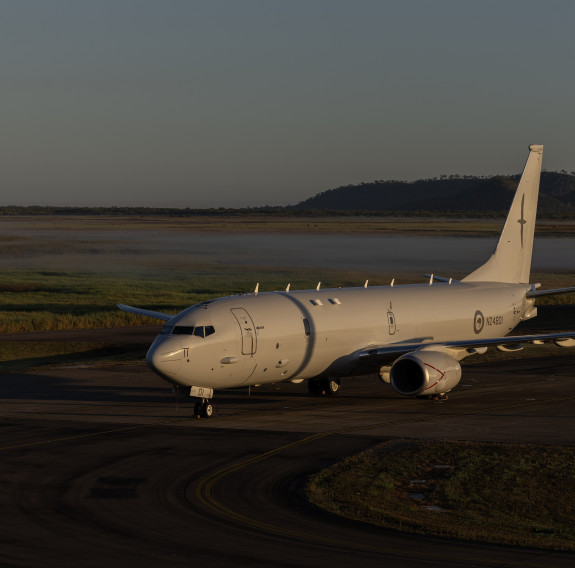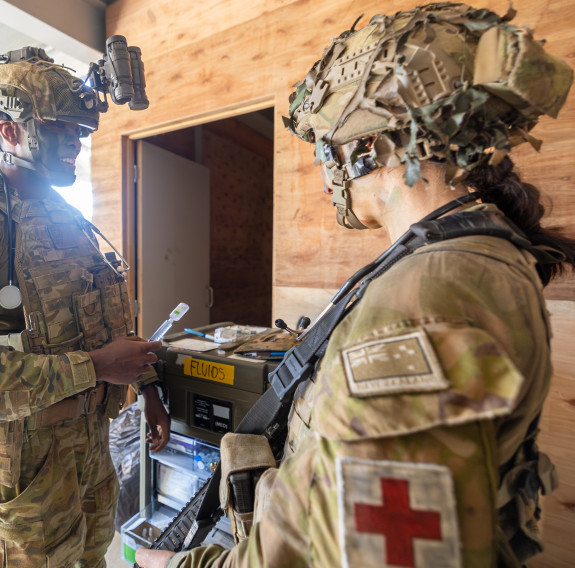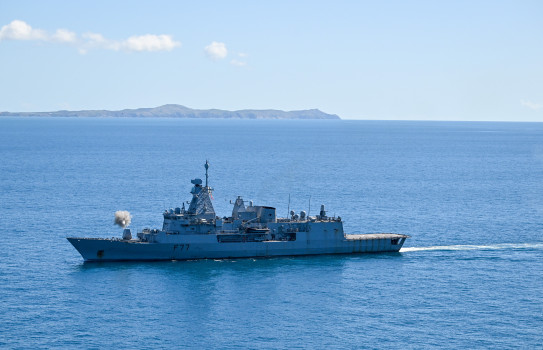Massive tick for partnership as large-scale military exercise wraps up
Exercise Talisman Sabre 2025, which officially concluded with a closing ceremony on 4 August in Papua New Guinea, has showcased New Zealand’s commitment to regional security and stability.
08 August, 2025
Now in its 11th year, Talisman Sabre is the largest bilateral combined training activity conducted between the Australian Defence Force and the United States armed forces.
Running from 13 July to 4 August, this iteration was the most expansive version to date, involving over 40,000 personnel from 19 nations, including New Zealand, and operating across land, sea, air, space, and cyber domains, highlighting the growing importance of regional defence teamwork.
The New Zealand Defence Force’s contribution was its largest to date and proved its ability to project, force integrate and practice multi-domain warfighting capabilities.
An NH90 helicopter from the RNZAF releases countermeasure flares, whilst operating the MAG-58 weapon system during a tactical flight over Soalwater Bay Training Area as part of Exercise Talisman Sabre 25.

Australian Army CH-47 Chinook aircraft and New Zealand Defence Force NH90 aircraft on the flight deck of HMAS Canberra during Exercise Talisman Sabre 2025, off the coast of Queensland.

A P-8A Poseidon from No 5 Squadron Royal New Zealand Air Force during Exercise Talisman Sabre 2025 at RAAF Base Townsville.
New Zealand’s contribution included a New Zealand Army Combat Team – infantry, armour, artillery, engineers, signals and logistics – as well as two Royal New Zealand Navy (RNZN) vessels, a mine countermeasures force and multiple aircraft from Numbers 3, 5 and 40 Squadrons, Royal New Zealand Air Force (RNZAF).
No. 5 Squadron flew P-8A aircraft from Townsville, joining forces with US Navy and Royal Australian Air Force (RAAF) P-8As in anti-submarine warfare missions and helping to detect, track, and respond to submarine threats while working as part of an international team.
The squadron tested its ability to operate smoothly in a joint task force and supported fleet readiness with technical and logistical help, demonstrating a strong role in regional security.
No. 3 Squadron deployed NH90 helicopters to Townsville for force integration training with Australia’s 5th Aviation Regiment, which included formation flying and live flare firing in preparation for complex missions.
Afterward, the squadron joined a multi-nation air assault with French and Australian forces, completing one of the largest internal RNZAF deployments in history - a major operational achievement.
Combat Team Wolfpack pushes through the Urban Operations Training Facility during a coordinated assault as part of Exercise Talisman Sabre.
NZ Army soldiers exiting an NZ LAV during field training as part of a tactical dismount as part of Exercise Talisman Sabre

An Australian Army soldier from 2nd Health Battalion and New Zealand Army medic work together during Exercise Talisman Sabre 2025 at Shoalwater Bay Training Area, Rockhampton, QLD.
The NZ Army’s Combat Team Wolfpack embedded within Australia’s 7th Brigade. They landed at Williamson Airfield and moved south to support Battle Group Ram in finding and defeating enemy forces using firepower, mobility, infantry skills, and drones. The exercise ended with a successful urban assault, showing their ability to work well with Australian troops and other partners.
For the RNZN, frigate HMNZS Te Kaha was part of an amphibious assault group, conducting escort and protection duties for the amphibious assault ships alongside ships from Australia, Japan, Korea, and the United States.
Te Kaha Executive Officer Lieutenant Commander Brock West says their tasks included naval gunfire support, anti-submarine warfare, anti-air warfare, surface warfare, replenishment underway, and force protection.
Of note was Te Kaha working with the RAAF to prove a logistical maritime airdrop capability, showing how vital light weight stores could get to the frontlines of a naval force.
“Talisman Sabre provided the opportunity to hone critical warfare skills, improve interoperability, build on relationships developed with our work with the UK Carrier Task Group, and exposed our operators to the challenges of planning, co-ordinating, and executing a large military exercise which covers the land, sea, and air.”

HMNZS Te Kaha
HMNZS Canterbury proved itself as a logistics vessel, transporting personnel, helicopters and vehicles in four trips in total between the east coast of Australia and Wellington.
Mine Countermeasures (MCM) capabilities were tested during Talisman Sabre, with Royal New Zealand Navy MCM forces basing themselves on expeditionary sea base vessel USS John L Canley to clear the navigation areas of Gladstone Harbour.
Lieutenant Commander James Harper, Officer in Charge MCM, says exercises such as Talisman Sabre are important activities to enhance his teams’ interoperability and integration.
“When the fight comes we need to team up quickly and efficiently as a coalition to defeat the enemy.”
New Zealand’s Senior National Officer Lieutenant Colonel Tim Tuatini says Talisman Sabre reflects the strength and interoperability of the NZDF in training alongside Australia and other partner nations.
“It enables us to seamlessly come together and conduct exercises here in Australia during these strategically uncertain times.
“With more nations than ever before, Talisman Sabre marked a milestone in multinational defence cooperation in the Indo-Pacific and highlighted New Zealand’s strong commitment to regional security and readiness.”
View all the exercise updates on the Exercise Talisman Sabre page here.